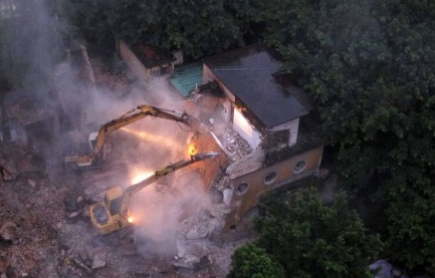Guangzhou destroys two heritage buildings from the 1940s, despite protests
Posted: 06/14/2013 10:00 amTwo buildings on Guangzhou’s Shishu Road which represent a rare form of architecture were leveled on the morning of June 11 in spite of locals having written to the government to protest, Xinhua reports. Both were built during the Republic of China period in the 1940s.
The buildings were said by experts to represent a form of architecture that mixed the ancient with the modern and is extremely rare. The type of architecture was even described as being as important to China’s cultural heritage as the panda.
Historically significant buildings being demolished in the name of development is, of course, nothing new.
Philip Pan described the process in his 2008 book, Out of Mao’s Shadow:
In reality, though, local officials often approved projects and sold land-use rights to developers without going through the trouble of buying or seizing them from homeowners first. Officials then conspired with developers to pressure owners to give up their land. Developers often hired thugs to intimidate residents while police looked the other way. And local authorities sometimes cut off water, electricity, or heat to the holdouts. If necessary, the government intervened on behalf of developers and ordered a forced eviction on questionable legal grounds. Altogether, between 1991 and 2003, more than half a million families in Beijing were evicted by developers.
This has given rise to the coinage of the term “chaina,” which sounds like the English word “China” but means “Where should we demolish next?”











